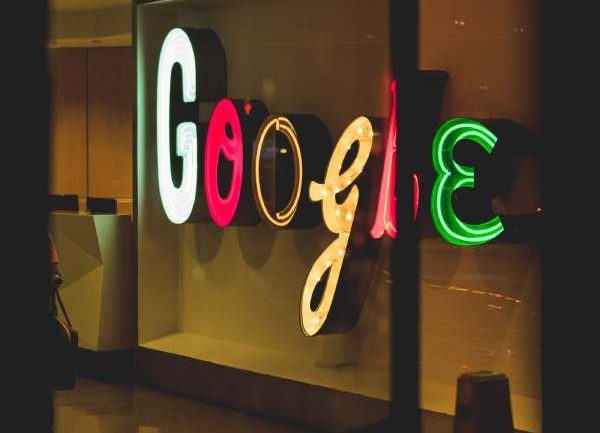Engaging stories and amazing pictures say more than a thousand keywords. Even more when the goal is to communicate effectively and generate conversion.
When browsing the social media update stream, a person first sees the picture. After that, he looks at the link title, and if there is some interesting content, he may still read the update text before clicking the link forward. For this reason, a mere image should tell a person about the content of the update. Imaginary is the most important tool to communicate effectively.
Because a good image stops your browsing finger, it will also make the click decision we need. Once the decision on the click is made, the purchase decision is not far away.

The volume of visual communication is increasing
Do you still remember the early days of Facebook, when the content of the updates was short text snippets? Ivan is… at work. Then we were delighted with the emojis, with which the messages were enhanced with emotion. In the end, there was the opportunity to add a photo to the update and even a video that was revolutionary! Shortly thereafter, we visual people were delighted with Instagram, a purely photo-focused social media platform.
Demanding quality
Vision is such a significant sense for the human being, therefore it is completely obvious that its use for commercial purposes is in constant development.
The volume of visual communication has grown wild in recent years. The human eye is adapting to HD images, pictures and illustrations when communicating effectively. They are also demanding higher definitions; 4K, 5K and recently 8K; more natural animations and more impacting images.
We learn to ignore flickering banner ads on our sites, and looking for exactly what we were seeking for on the site. In this world of learning to skip images, you have to carefully select images that transmit emotions, motivations and call the spectator’s attention to communicate effectively.
When the picture speaks to its viewer, we get his attention and more likely increase the sought conversion.
This year, Facebook enabled larger fonts and colourful backgrounds to refresh texts that make it easy for anyone to produce impressive, pictorial text content. The image uploaded to the channel can be confirmed by text, but only with a few carefully thought-out words. If more than 20% of the image area is text, it cannot be advertised.

Visual Identity
In corporate communications, visual corporate identity are important. In digital marketing communications, the task of images is to convey information and feelings.
That is why it is important that the companies’ channels also have natural images of events and employees to strengthen the image of the employer. However, one sunny beach picture is not indicative of summer, but digital image marketing communications must be systematic and regular in the way to call the summery spirit of the viewer. Only then, we would communicate effectively.
It does not need to flow or even be particularly coherent. You probably remember the times where the things that showed up on your hunt weren’t the least bit associated with what you were searching for.
SEO and Search Engine Changes
Google has changed that. In the last ten years, our hunts have grown more accurate–and that is largely because of quality-written, SEO-friendly content. Unexpectedly, the question you have answered, the support you are looking for, and the product that you’re attempting to monitor is to the very first webpage (think about it–how often do you proceed to page two?) .
Here’s why you’ve got the magic of Fantastic content to thank you for that:
It is possible to link-build, boost, and print advertisements. However, the perfect method to rank organically would still be to produce rich and unique content, great user experience and communicate effectively.
How to Make a Great Content?
Before we leap too far forward, let us summarise the broad characteristics of a successful and converting content:
- Polished punctuation, grammar, and spelling mistakes;
- Informs and incites;
- Keeps simple and in Accordance with the page name;
- Welcomes readers exactly what they need (high conversion speed).
Your aim, regardless of what, will be to provide value. It is one thing to incorporate keywords throughout your content in a natural and organic way, support pages, and meta tag descriptions. But another is that once your website has been discovered, your only aim is to communicate effectively and get people clicking about to contact you or purchase your goods/services.
This is the area where conversion boosting is sold from. There are a number of variables that lead to high dialog Prices, like an attractive and practical web design along with also a tactical email effort, but Regarding search-engine content, Here Is What you need to accomplish:

What does Google see from your digital content?
While Google needs to ensure top quality articles for its regular users, it additionally bases its search results on:
- The frequency of which you print articles (the higher the frequency, the greater the ranks )
- the Number of quality articles
the keywords and search phrases that you use from the name tags and headlines - the Number of individuals sharing your articles on Social Networking
your click-through speed
All of these are elements which go hand-in-hand with producing quality articles and is what Google is starving for. Why? Since we, its faithful customers, will just move onto another better search engine when we’re not getting the outcomes we search out from this one. Ever wonder how Google keeps its competitive advantage? Those geniuses are continuously changing and producing algorithms so as to better their quality-content radar.
Now that you have recognised why Google wants quality articles and also have a general idea of how it distinguishes it, let us delve into the details about how Google defines caliber articles:
- Create long blog posts/articles and internet pages chock full of helpful info and appealing graphics;
- Supply information pertinent to people’s searches; fit your articles with your page names;
- Publish just professional writing–maybe not amateur-level; supply insight and demonstrate you’re a specialist in your area;
- Be resourceful and connect to other high quality articles; mention reputed books, trendy sites, etc…
- Publish fresh, unique articles often; Google checks frequently if you’ve done something new (however over-publishing seems somewhat”spammy”, so be fair ).


